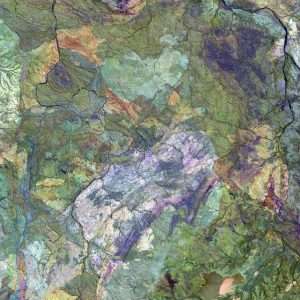Designers: Get Started by Designing With Type: A blog about using typography and fonts to create a great design.
Why Your Web Typography Is Probably Terrible
There is a lot of beautiful typography on the web. But there is also a lot of ugly, hard-to-read, or just plain illegible type. I visit quite a few blogs that sport ugly type. Even on some high-traffic sites with good designers, the type is often set in a way that makes reading difficult. I’ve thought about this for years, but only recently finally figured out why so many sites have such bad typography.
A few months ago I started visiting the blogs of friends and acquaintances who are not professional designers to get a better idea of how non-professionals were using the Web. One thing I noticed is that my friends who used Blogger did better than those who used LiveJournal or WordPress: they had more readable text with fewer typos. My theory is that professional designers don’t use blogging tools because they’re more concerned with design than writing, and customizing existing templates isn’t very satisfying for them. So most bloggers are not professional designers, and most web users aren’t either (and probably don’t even know that they
Designing with type is a beautiful field. It allows designers to show their skill and creativity in many ways. There are so many different fonts available for us to use, but the more you learn about them the more you will find that there are only a few that really stand out as being great for web design.
Type can be used in so many ways, it is great fun to just play around with it and see what works best for each project. There is nothing quite like seeing your words set in a font that you created, and knowing that no one else has ever used that font before. These fonts can also be used on other types of media, such as advertisements and magazines as well.
Trying new fonts out is an easy way to get creative and move away from the same old thing that everyone else uses. Take a look at some of these fonts and see if they fit the bill for your next project!
Most art directors are hard pressed to come up with something that looks good, and when you can’t come up with anything, then you call a designer. A lot of designers like it that way, because it means they have a chance to shine. They will take on the project and come up with something that is amazing, and of course they will get paid.
Image via Wikipedia
The mistake I made was in thinking I could come up with something on my own. It’s not possible. If you look at a poster that has been designed by an art director, you will see the difference. The typography will be great and the overall design will be great and the concept will be great. The whole thing will be great because someone had an idea for how to make it great.
A better way to get started is to design with type. You can do this alone or with friends if you want, but I would recommend doing it alone so you can focus on learning the fundamentals of design and typography.
The computer art is a graphical design of typefaces, characters and images that is created on the computer. The artwork generated by the computer consists of geometric shapes, lines, curves, patterns, textures and colors.
The ancient art has been replaced by an amazing graphics software which helps in designing computer art. The shapes formed from these fonts can be of any color and size and can be used for various purposes like for designing logos, posters, advertisements etc.
The arrival of the computer era has given a new dimension to the type art. It has made it more advanced and contemporary with the help of sophisticated software tools that add more creativity to it. The use of fonts in the art form has made it more appealing to the viewers hence making it a growing trend in today’s world. A designer can create an amazing piece of art by combining different fonts with different shapes and colors to create a unique design that suits all kind of purposes.
There are many different techniques used when designing with type. The two most common ones are the grid and contrast.
The Grid System
A grid system is a way of organizing content using rows and columns. Grids create an order to a layout, avoiding chaos and confusion for the viewers. Grids are created by dividing the page into a specific number of columns (usually 2-5). Content is then placed within these columns to show readers where information can be found. The different columns allow the viewer to quickly scan the page and easily identify which pieces of information they need to read more closely.
The most common mistake made in creating a grid is having too many columns or not enough content to fill them. If there is too much space between the different columns, it will look like there is unused space on purpose, when actually it’s just wasted space. In this example, there are only three possible places for text, making it look like there is wasted space:
There needs to be more content than empty space in order for the layout to make sense to viewers.
Contrasting Fonts
Contrasting fonts are either very different or very similar fonts that work well together when placed next to each other on a layout. Contrasting fonts can be used in headers
Fonts are a medium of expression, and they shouldn’t be overlooked when designing an art piece, or any other project.
When it comes to creating designs you have to have a creative mind, because the artistic capability to come up with fresh, un-boring designs is just what makes an artist a good designer. The same goes for fonts; they’re creative elements and you should use them as such.
The side effect of being a creative person and using fonts in different ways is that your art work will stand out among other pieces created by people who just stick to standard font choices.
Font combinations can make or break any artwork, so keep this in mind when designing. Think about your design before picking a font to use in it, because if your idea is not clear from the start you won’t be able to create something that really stands out.
Today, the field of graphic design has expanded to encompass new creative and technical challenges. More than any other time in history, we have an opportunity to help shape the future of how people communicate. However, in order to be successful in this ever-changing field, we must adapt to new ways of thinking and learning. One way that we at Typekit are doing this is by partnering with designers from a variety of backgrounds to produce original content for our blog.
Other contributors include Alex Poole, Creative Director at The League of Moveable Type; Jessica Hische, letterer; Mark Simonson, type designer; Luke Choice, illustrator; Amy Gedgaudas, letterpress printer; and Michelle Tan aka Mimi Ged, designer and blogger. As you can see from their diverse resumes, they bring a wealth of knowledge and experience to the table that will hopefully inspire you as much as it has us.
Cory Miller


